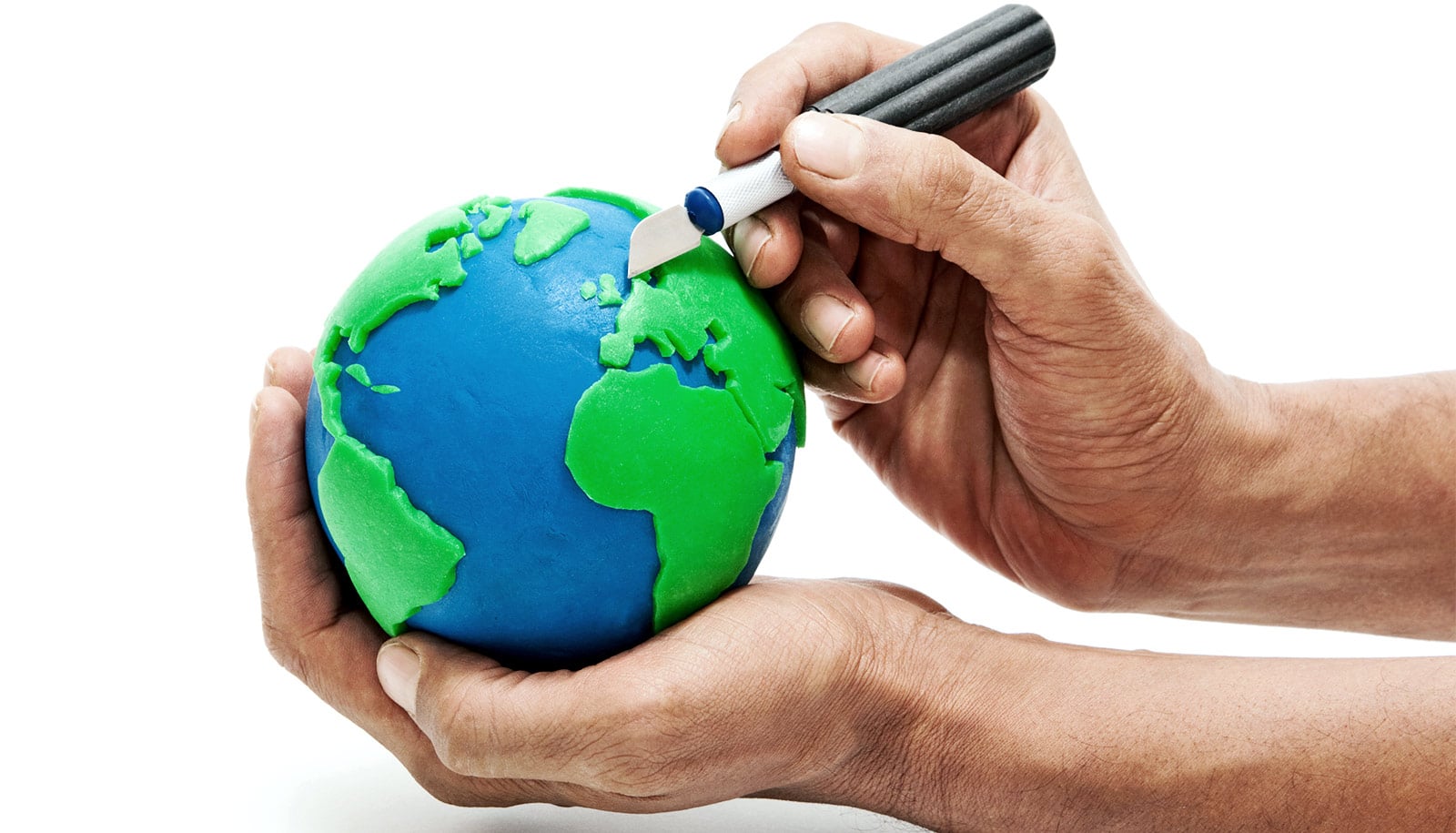Thousands of years before humans began burning fossil fuels, human activity had indelibly altered the natural world through foraging, herding animals, and farming, according to a new study.
The study synthesizes data from 255 archaeologists to provide the first global survey of the Earth’s transformation through human land use over the past 10,000 years. The findings challenge the commonly held view that large-scale, human-caused environmental change is a relatively recent phenomenon. It also shows how the overall impact of human behavior has been growing exponentially since the end of the last Ice Age.
“Our team synthesized archaeological data provided by experts from around the world to establish a timeline for when people in different parts of the world began to intensify land use in different ways,” says Heather Thakar, assistant professor in the anthropology department at Texas A&M University.

The ArchaeoGLOBE project analyzed land use from roughly 10,000 years ago, the time of hunters and gatherers, to the year 1850, after the Industrial Revolution.
“…I believe that we will also find a way to ensure that our home remains habitable for our species.”
The new study adds an archaeological perspective to existing models of historical land use. Based on researchers’ expertise of land use on six continents, the crowdsourced map shows that agriculture—an extraction of environmental resources that leaves a complex mark on the landscape—began earlier, and in more parts of the world, than more recent studies have reported.
“There are archaeologists working all over the world, but they aggregate data differently, and it can be difficult to find larger patterns,” says coauthor Ben Marwick, an associate professor of anthropology at the University of Washington. “By asking archaeologists a series of questions rather than combining datasets, we’ve created a brilliant workaround—essentially, what were people doing, and how much, in different parts of the world?”
10,000 years of human activity
The researchers looked at how human global land use has transformed the surface of the Earth, especially in the last 10,000 years. They divided Earth into 146 regions and used 10 time periods, from 10,000 years ago to 1850.
They found that about 42% of the regions examined had some form of agriculture by about 6,000 years ago, and that the beginnings of agriculture occurred earlier than previously believed.
The researchers conclude that foragers, farmers, and herders had transformed the planet by 3,000 years ago—much earlier than the timeframe derived from the most common land-use reconstructions used by earth scientists. In some regions, the survey showed effects of intensive land-use more than 1,000 earlier than previous estimates.
“The industrial revolution and large-scale agriculture often spring to mind when people think about human impact on the environment, but these findings show that humans have been transforming the landscape going back at least 10,000 years,” says coauthor Jessica Thompson, an anthropologist at Yale University. “The line that separates the ‘pristine’ natural world from one transformed by people is blurrier and goes further back in time than what is commonly believed.”

The survey found that foraging, which includes hunting, gathering, and fishing, was commonplace 10,000 years ago in 120, or 82%, of the 145 regions. However, foragers were not passive occupants; they also drastically changed landscapes, such as through extensive burning, to improve conditions for hunting and gathering, according to the study.
“We are at a critical turning point.”
“Certainly foragers had significant impacts on the plant and animal communities where they lived,” Thompson says. “They manipulated the landscape to enhance their chances of survival. They might burn land to increase its productivity or influence how vegetation grows to attract animals to hunt.
“We need to start thinking more seriously about that activity when we consider what constitutes an environment or landscape transformed by people. And that requires archaeologists to be a part of the conversation about modern-day human impacts.”
“Think of it this way: when humans began to intensify land use in different ways, often times associated with increased food production, they also began to alter the local landscape and ecology in significant and lasting ways, such as human driven extinctions and deforestation,” Thakar says.
“We have established that intensive human impacts on local environments begin much earlier than many researchers had previously assumed. This work provides important historical context for our rapidly accelerating impacts on the Earth.”
Defining the Anthropocene
The team’s research also examines the origins of the Anthropocene, which is a term used to mark how people shaped the world and continue to shape it through their actions. The word combines “anthropo,” meaning human, and “cene,” meaning an epoch of geologic time.
“I would say the Anthropocene Era is already widely accepted by the scientific community,” Thakar says. “The idea that human activity has become a dominant influence on the global environment during recorded history is well-established. What is debated, across disciplines, is not whether the Anthropocene exists, but the point at which our actions as a species became a climatic-driving force on par with that of major geologic processes.”
Thakar notes that the project contributes a global assessment of how far we can push scientific evidence of human-induced landscape transformations.
The Anthropocene includes major milestones in human history, among them the invention of the wheel 3,500 years ago; the printing revolution that began in 1439; the scientific revolution from 1543 to 1687; the invention of the steam engine in 1712; the world’s population reaching 1 billion in 1804; the first electric motor in 1822; the first modern oil well built in 1859; World War I and World War II; the atomic age in 1945; the “Great Accleration” of knowledge that began in 1950 and continued for the next 60 years with unprecedented discoveries; and to 2011 when the world population hit 7 billion.
What’s next for humanity?
It raises the question: what do the next thousand years hold for humankind?
“I think that we need to be concerned, not just about some distant future (1000 years), but the very near future (10-100 years) which offers our greatest opportunity to consciously, critically, and deliberately influence the Earth’s climate,” Thakar says. “Our past does help predict our future, and our past documents humanity’s incredible capacity for innovation and collective action. Once we accept the truth of our role as climate-drivers, I believe that we will also find a way to ensure that our home remains habitable for our species.”
She adds that archaeological data demonstrates humans’ ability to adapt to changing conditions, giving hope that we can find ways to adapt to global climatic changes in our future.
“But, what we face today is unprecedented in both pace and scope,” Thakar says. “We are at a critical turning point. In order to land safely in the future, we must change outdated and destructive habits and replace them with new, future-oriented solutions.”
The research appears in Science.
The National Science Foundation funded the work.
Source: Texas A&M University, University of Washington, Yale University



